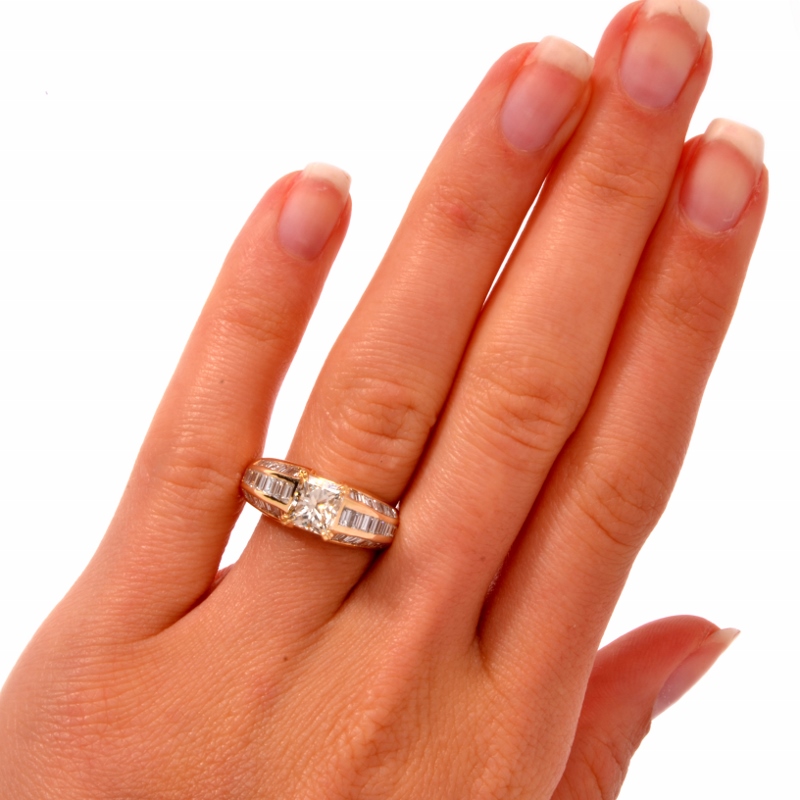
The name “Princess Cut” was originally used in connection with another diamond cut, known as the “Profile” cut, designed by Arpad Nagy, a London cutter, in 1961. The same name was later used and made popular by Ygal Perlman, and Betzalel Ambar, in Israel in 1979. A similar cut with 49 facets, instead of the original 58 facets of the princess cut, was later given the name “Quadrillion” and first distributed by Ambar Diamonds in Los Angeles. Three years of research produced a square stone with faceting similar to that of a round brilliant cut diamond.
The princess cut diamond has gained in popularity throughout the years as a more distinctive alternative to the more popular round brilliant-cut, in which the top of diamond, or ‘the crown’, is cut with a round face-up shape and the bottom, referred to as ‘the pavilion’, is shaped similar to a cone. Princess cut diamonds are also referred to as ‘square modified brilliants’. Princess cut had its origins in the early “French” cut, having a series of unique, chevron-shaped facets in the pavilion which combine to give a distinct cross-shaped reflection to the stone.
Despite being a somewhat costly choice, the princess cut will remain a favorite for engagement rings because of its unique characteristics and unsurpassed brilliance..


